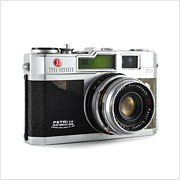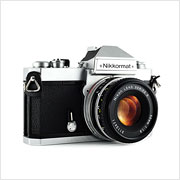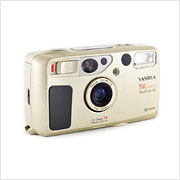Konica Auto S
The Konica Auto S is the first ever automatic exposure 35mm camera to be powered by a cadmium sulfide meter. Introduced by Konishiroku Shashin Kogyo K.K. in 1963, decades before it became officially known as Konica, the Auto S is also the first automatic exposure model in the “S” line of classically designed compact rangefinders.





















